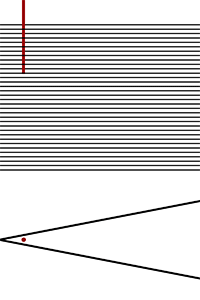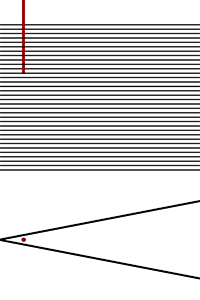What is a 3-dimensional woven textile?
In standard 2-dimensional weaving (the left illustration below), weft threads (red) are woven through warp threads (black). In the simplest possible pattern, the weft alternates between passing above and below the warp, creating a single layer of fabric. In 3-dimensional weaving, the goal is to create thickness by stacking multiple layers. On conventional weaving machines, the layering is achieved by dividing the warp into multiple, separate sets. On a given pass through the warp, the weft will not intersect the warp threads that belong to a different layer. The right illustration below demonstrates this process for a three-layer weave.


Is it possible to weave a sphere?
Our goal is to challenge the limits of conventional weaving techniques by expressing dark matter structures as a textile. Inspired by dark matter halos, we wish to create a weave pattern that, when folded open, changes into a spherical shape. The three images below show a prototype that represents a quarter of a sphere, with more and more layers added towards the center. When the warp and weft threads are pulled in different directions, they resemble the filaments of the cosmic web of dark matter, with a halo at the intersection of multiple filaments.

 The prototypes were woven by hand on a TC-1 loom of Digital Norway at SAIC. We continuously work to improve the weaving patterns to create more spherical structures. For our large-scale textile installations, the weaving was done on an industrial Dornier Jacquard weaving machine at the TextielLab in Tilburg, Netherlands. The image to the left shows one of the halos in the final textile. When cut from the loom and put under tension, the structure props up to expose the 100 to 600 vertical stacked layers. Please see our Phase III installation for images of the woven spheres.
The prototypes were woven by hand on a TC-1 loom of Digital Norway at SAIC. We continuously work to improve the weaving patterns to create more spherical structures. For our large-scale textile installations, the weaving was done on an industrial Dornier Jacquard weaving machine at the TextielLab in Tilburg, Netherlands. The image to the left shows one of the halos in the final textile. When cut from the loom and put under tension, the structure props up to expose the 100 to 600 vertical stacked layers. Please see our Phase III installation for images of the woven spheres.